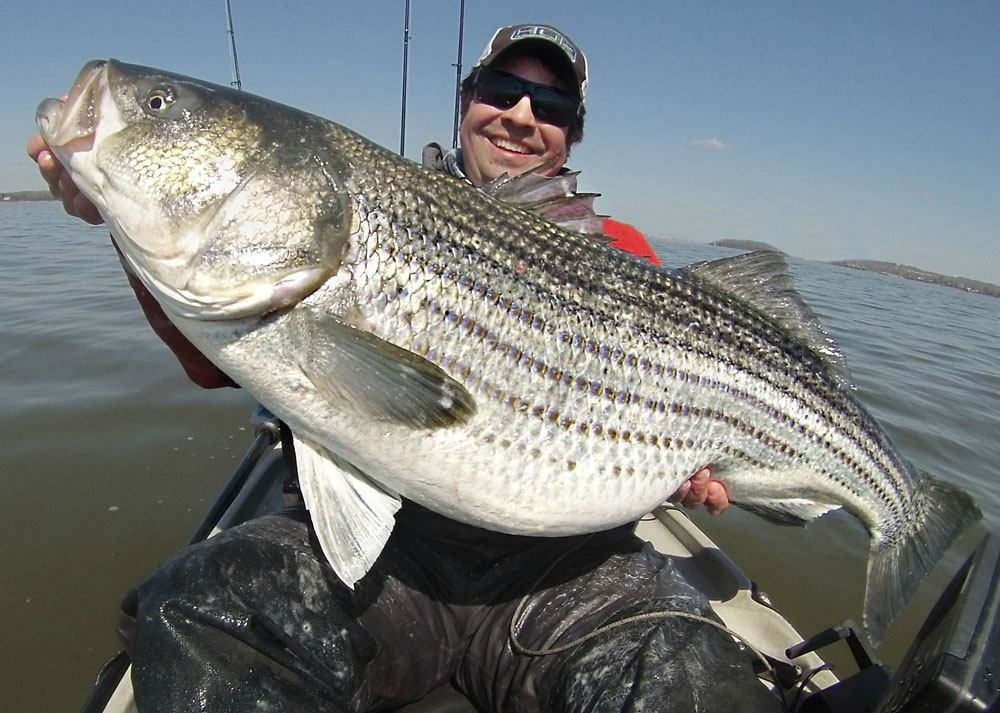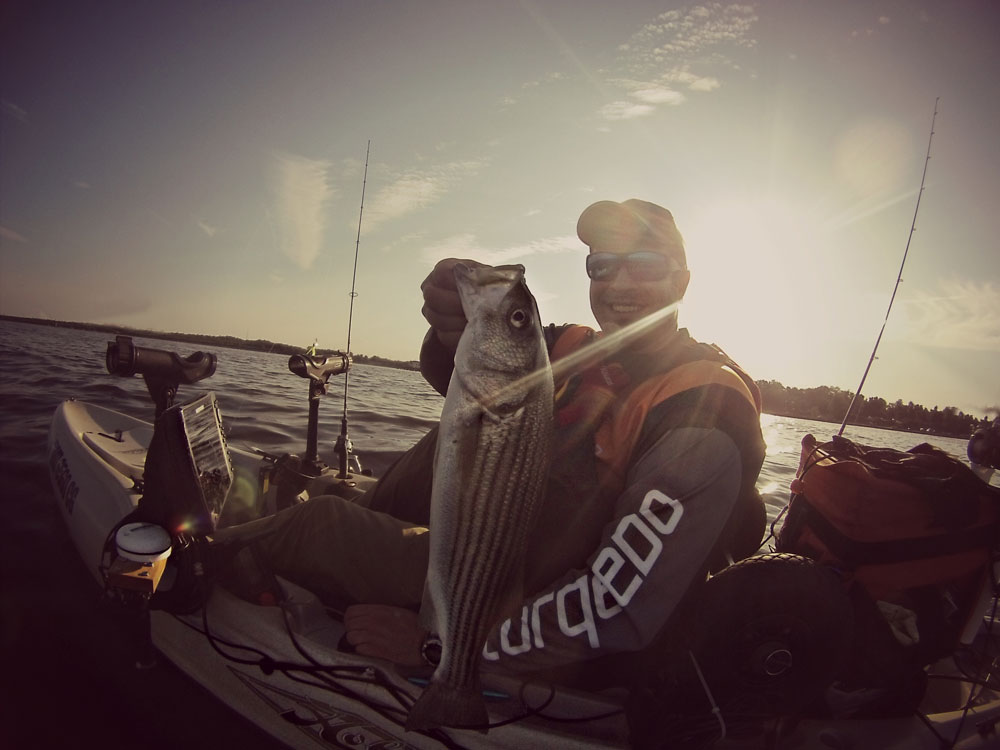There’s an old saying that applies to kayak fishing, among other things: “If you only have a hammer, everything looks like a nail.” In other words, we perform the task at hand using the tools we have and hardly give a second thought to performing the task any other way. Consider your parents’ generation, often opting for archaic methods rather than using newer technology. In many ways, we also see it in our fishing techniques. And no, I don’t mean buying the latest greatest lures versus tried and true ones—I’m referring to style and technique.

For decades the hammer for fishing the Chesapeake has been a powerboat. It’s a great tool, tried and true. The powerboat will always be a great tool, especially in the summer months, jumping from spot to spot, chasing breakers and following the schools up and down the bay. However, any respectable toolbox will contain much more than just a hammer. To build a house of fishing skills, you should research all the tools of the trade. The new tool I want to discuss is actually a tool even older than the powerboat—kayaks have been around forever, though it seems Chesapeake anglers are only beginning to realize their benefits.
In summer I want a boat, but in autumn, spring and winter I prefer a kayak. Why? Think of it this way: if I hop in a car and drive to the grocery story I’ll arrive at the intended destination, but I won’t pay much attention to anything in between. Sure, I’ll notice pedestrians, road markings, and signage, but I would have noticed much greater detail had I walked instead of driving. Walking takes a lot more time, so inherently, you notice the cracks in the sidewalk, overhear conversations of pedestrians, and stop to smell the daisies.
In a kayak speed is not an advantage, so using this tool forces anglers to act differently. They see the fishery through a different lens, and as a result, target striped bass in completely different ways. If a hot bite pops up five miles away, too bad. Kayaks are not getting there on time. Fortunately, they don’t need to go that far. Kayak anglers have discovered that being more thorough gives them the ability to catch fish that anglers fishing with hammers simply pass over.
I can’t count the times when powerboats have not given a second thought to areas I fish, leaving me scratching my head. The truth is, to continue this analogy a bit further, in my kayak I’m doing fine detail work not suitable for a hammer. Having fished extensively from both vessels the strengths and weaknesses are thoroughly apparent. I’m always trying to recreate kayak advantages while in boats, but more often than not it’s like trying to hammer a screw. They’re simply different tools.
Why can’t I perform similarly in a boat as I do in a kayak? To explain this, I’ll draw another analogy, once again using a car. Imagine driving your car through the forest. While wonderful on the trail, I suspect it wouldn’t work well navigating stumps, boulders and other obstacles. A mountain bike could navigate these beautifully. It’s lighter and can maneuver like an extension of your own body. A kayak can not only go places too dangerous for boats, but they can maneuver in ways that open opportunities for a greater selection of presentations. Kayaks deliver presentations with surgical precision both trolling and jigging, and as it turns out, striped bass go bonkers for it.

If I want to catch a trophy striped bass, I want to be on a kayak because I believe it provides the best opportunity as well as the most fun. I remember speaking with a guide that trolls very large baits and spreaders in open water. I respectfully described how my style sharply contrasts his, and he responded, “…but do you catch big fish?” If you’ve followed me online or read my books, you know the answer to that question. However, the point is, there’s a whole different perspective out there, solving the same problem of catching fish but using different tools. When you have more tools you find more uses for them, becoming an even better craftsman. I’ve devoted a series of books to show the alternate perspective, and through these books, tell the story of the kayak angler. I go into great detail describing specific techniques, and while there is a lot of cross-over and application for powerboats, the goal is to describe a new paradigm. I’ve fished 30 years for a variety of species using many different tools, and through it all, I’ve found more similarities than differences. Combining this knowledge helps reach the next level in understanding how to target the fish we love.
One final thing to consider as you interact with different anglers: put aside your own biases and preconceived notions about everything you know about the bay. Each of us has them. Then just listen. Listen to the vocabulary they use, the patterns they target and the lures they carry. Are they different from yours? If they are, there’s probably a lot you can learn. Consider the story in context of the tools being used. Often the story has more meaning within that context. I’ll say it again—everyone has a different perspective. Have you ever wondered why boat anglers are so protective of spots while kayakers tend to share much more freely? Reflect upon it and think about the point of view each holds. It’s a completely different view of the same fishery, created purely as a result of using different tools.
- By Alan Battista
Alan Battista is the author of Light Tackle Kayak Trolling the Chesapeake Bay, with his second book, Light Tackle Kayak Jigging the Chesapeake Bay due for release this month. He serves as pro staff for several top companies including Torqeedo, Humminbird and Kokatat, consulting and partnering with many others. When he’s not fishing, you can find him around town giving talks or seminars at local clubs and shows. Be sure to pick up his handmade Chesapeake Rigs (if you can get your hands on one) and his signature jigging rod, Buoy 21.